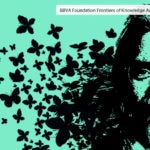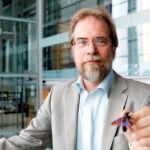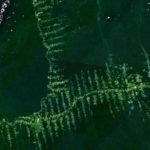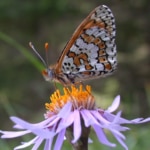Anti-extinction tactics for life in broken habitats
From childhood, Ilkka Hanski was a keen butterfly collector. At the age of eight he found a specimen of a species considered extinct in Finland, and a professor at the University of Helsinki specializing in that species sent him one of his scientific papers.

This gesture would deeply influence the young entomologist, who not only pressed on with his hobby but with time, and study, was able to devise strategies to help butterflies and other species survive their greatest threat: habitat loss and fragmentation.
Hanski, Professor of Zoology at the University of Helsinki, echoes the words of an earlier BBVA Foundation Frontiers of Knowledge laureate, Edward O. Wilson, when he describes biodiversity loss as the gravest danger currently facing humanity. There is a way back from other problems, affirm Hanski and Wilson, but evolution needs millions of years to enrich the planet with a diversity of life. “We are losing biodiversity at a rapid pace,” Hanski warns, and he offers a statistic.
Each century 1% of plant and animal species are driven to extinction. That doesn’t seem much? Only if we forget that before human influence species extinction advanced a thousand times slower. And more alarming still, the extinction rate continues to accelerate. Hanski is convinced that by 2050 it will have multiplied by ten at least.

Ilkka Hanski, BBVA Foundation Frontiers of Knowledge Award in Ecology and Conservation Biology. University of Helsinki, Linda Tammisto.
The first cause of extinction is habitat loss due to processes like climate change, deforestation and urbanization. Hence the importance of Hanski’s work analyzing the relationship between a species’ spatial distribution and its survival. His research, specifically, focuses on the characteristics species populations must possess in order to avoid extinction and, vice versa, which population factors put the species at risk.
Hanski has developed mathematical models that use inputs like the number, size and connectivity of a species’ populations to predict its viability. Connectivity, for instance, is a vital parameter because it determines whether a given population can colonize another and gather “reinforcements.”
Hanski’s studies with butterflies have shown that in overly isolated populations, endogamy causes mutations that impair the insects’ flight capacity, so diminishing the species’ long-term survival.

Amazonia from the space. NASA
His models provide a vital guide to the efficiency of biodiversity conservation initiatives, and are applied to the design of protected areas, the creation of biological corridors or environmental impact studies prior to major infrastructure developments. They also specify the maximum degree of habitat fragmentation each species can withstand, a threshold beyond which extinction lurks. The impact of his work will foreseeably increase “as habitats become more fragmented due to anthropogenic influences,” in the words of the jury’s citation.
Habitat loss and fragmentation really is the main reason why biodiversity is rapidly declining all over the world — Hanski
The academic field that Hanski developed is called metapopulation ecology, referring to the network of populations that make up each species. Although the study of metapopulations has proved to be effective at mitigating extinction in artificially fragmented habitats, metapopulations as such are an entirely natural phenomenon.
Hanski himself explains it thus: “In nature many habitats are not homogeneous, but patchy or fragmented, and in these cases species are distributed in metapopulations. It is important to understand metapopulation networks, because human activity leads to greater fragmentation.”
Ilkka Hanski was born in Helsinki (Finland) in 1953. In his time as a doctorate student at the University of Oxford (United Kingdom) in the late 1970s, he became interested in quantifying population isolation in the environment. Observing his study animal, the dung beetle, he was struck by the fact that each cow pie was a biodiversity island, inhabited by some species and not others. He began using mathematical models to elucidate the variables influencing each species’ success or failure.
Back in Finland, he initiated what the jury calls his “exquisite long-term field studies.” Inspired by a visit from another BBVA Foundation Frontiers of Knowledge laureate, Stanford entomologist Paul Ehrlich (United States), Hanski settled on the Glanville fritillary butterfly (Melitaea cinxia) as his new model organism, and set up his study area in the Åland Islands, in the Baltic Sea, where thousands of dry meadow patches provided the ideal fragmented habitat.
From the early 1990s, he and his students conducted an annual census of the butterflies present in each meadow, gathering the data that underpin his models, with a mix of theory and fieldwork that was particularly valued by the judges.

Melitaea cinxia. Niclas Fritzén - Robinson R
The conceptual tools of metapopulation biology have been seized on by other disciplines. Hanski himself has developed a theory that links the biodiversity individuals are exposed to with their microbiome, and the state of their immune system. The increase in allergic conditions, the ecologist conjectures, could have to do with reductions in biodiversity. “After all,” says Hanski, “for our microbiome, we ourselves are fragmented habitats.”
Ilkka Hanski died on May 10 this year at the age of 63. Before his passing, he set out to write an acceptance speech, with these opening words: “We biologists don’t always appreciate how lucky we are in being able to participate in the study of the most unique feature of our planet, which is life.”